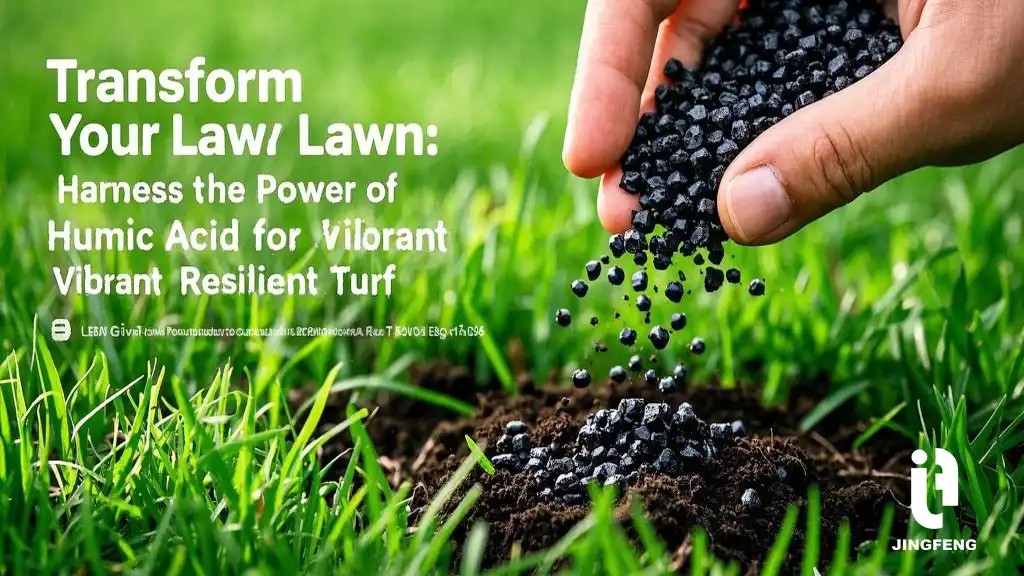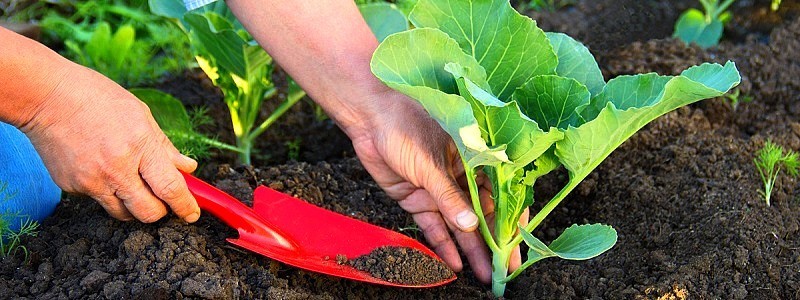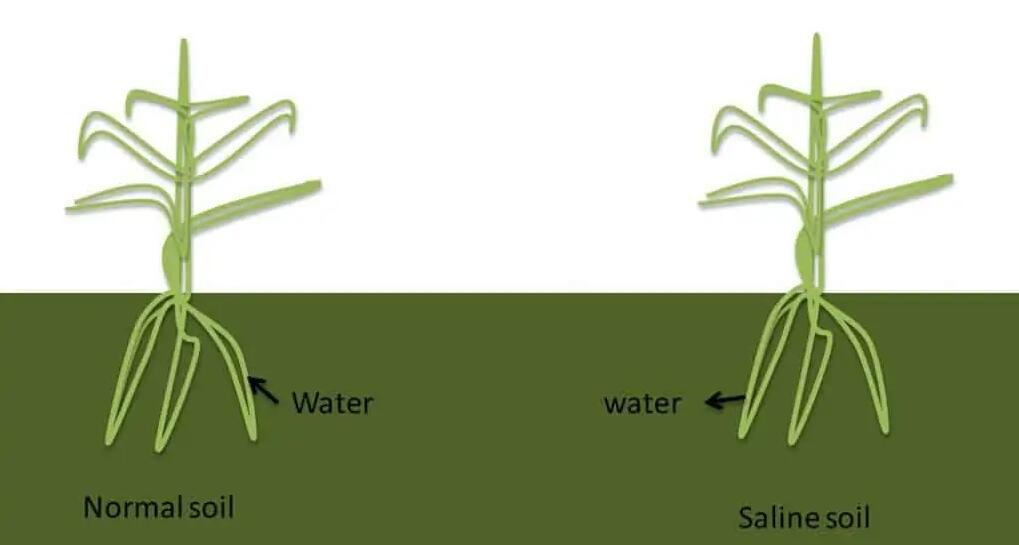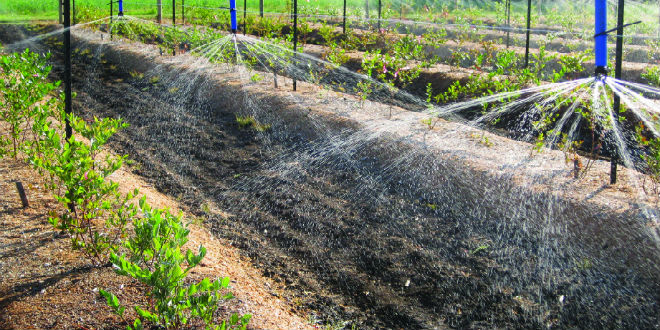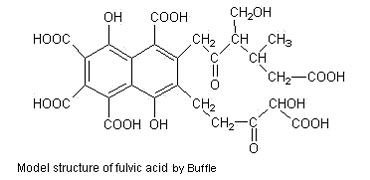You want your soil to produce healthy plants, but choosing between humic and fulvic acid can seem confusing. Humic and fulvic acid differ in size, function, and how long they last in soil. Humic acid for plants improves soil structure and supports long-term fertility. Fulvic acid helps your plants take up nutrients quickly. Understanding these differences helps you select the right solution for your needs. Recent studies show that using diverse organic soil amendments, such as humic and fulvic acids, leads to better plant growth and boosts soil fertility. In 2025, many gardeners turn to these natural options to get the most out of their soil.
Key Takeaways
- Humic acid improves soil structure and supports long-term soil health by helping soil hold water and nutrients.
- Fulvic acid helps plants absorb nutrients quickly and works well as a foliar spray for fast growth and stress resistance.
- Using humic acid in soil and fulvic acid on leaves together gives your plants both lasting and quick benefits.
- Apply humic acid during soil preparation or planting, and use fulvic acid sprays every few weeks during the growing season.
- Choose high-quality, certified products and follow recommended doses to get the best results and support a healthy garden.
Key Differences
Humic and Fulvic Acid Compared
You may wonder how humic and fulvic acid differ when you look for ways to improve your soil. Both play important roles, but they have unique properties that affect how they work in your garden. The table below gives you a clear side-by-side comparison:
| Aspect | Humic Acid (HA) | Fulvic Acid (FA) |
|---|---|---|
| Molecular Size | Larger, more complex molecules | Smaller, simpler molecules |
| Average Molecular Weight | ~6500 | ~1200 |
| Color | Dark brown to blackish | Light yellowish |
| Solubility | Insoluble in water at low pH; soluble at higher pH | Soluble in water at any pH |
| Soil Persistence | Lasts longer in soil, resists breakdown | Breaks down quickly, less persistent |
| Function | Improves soil structure, stores carbon | Boosts nutrient transport, reacts quickly in soil |
| Application | Best for soil conditioning and long-term improvement | Ideal for foliar sprays and fast nutrient delivery |
| Carboxylic Group Content | Lower percentage | Higher percentage |
| Effect of Soil Management | Stable under different practices | Changes more with soil management |
You can see that humic acid has a larger molecular size and stays in the soil longer. Fulvic acid, on the other hand, is smaller and more reactive. This means you use humic acid when you want to build soil health over time, while fulvic acid works best when you need quick results for your plants.
Tip: Use humic and fulvic acid together to get both long-term and short-term benefits for your soil and plants.
Benefits Overview
When you add humic and fulvic acid to your soil, you give your plants a powerful boost. Each acid offers unique benefits, and together they create a strong foundation for healthy growth.
- Humic acid benefits:
- Improves soil structure by helping soil particles stick together. This creates better air and water movement.
- Increases soil’s ability to hold water, so your plants stay hydrated longer.
- Raises the soil’s cation exchange capacity, which means your soil can hold onto more nutrients.
- Buffers soil pH, making it easier for plants to access nutrients.
- Reduces the harmful effects of heavy metals and toxic elements.
- Fulvic acid benefits:
- Helps plants take up nutrients faster, especially micronutrients like iron and zinc.
- Increases the movement of nutrients through plant cells, leading to better growth.
- Boosts plant resistance to stress, such as salty soil or drought.
- Raises protein and proline levels in plants, which helps them cope with tough conditions.
- Works well as a foliar spray, giving plants a quick nutrient boost.
Field studies show that humic and fulvic acid both improve soil aggregation, water retention, and nutrient availability. You will notice stronger roots, greener leaves, and better yields when you use these acids. Humic acid supports long-term soil health, while fulvic acid gives your plants a fast-acting advantage. Some research even shows that humic acid can increase plant height and yield more than fulvic acid, thanks to its hormone-like effects and ability to stimulate root growth.
You can use humic and fulvic acid in many ways. For example, you might add humic acid to your soil at planting time for lasting improvement. You can spray fulvic acid on leaves during the growing season for a quick boost. By understanding the differences and benefits of each, you make smarter choices for your garden in 2025.
What Are They?
Humic Acid
You find humic acid in soils, peat, and natural waters. It forms through the decomposition of plant and animal matter. This process creates large, dark molecules with a complex structure. Humic acid contains carbon, hydrogen, oxygen, and nitrogen. You see it as a dark brown or black substance. It does not dissolve in acidic water but becomes soluble in alkaline conditions. The molecular weight of humic acid ranges from 10,000 to 1,000,000, making it much larger than fulvic acid.
Humic acid acts as a biopolymer with many functional groups, such as carboxylic and phenolic groups. These groups help humic acid bind nutrients and minerals in the soil. You can use humic acid to improve soil fertility, water retention, and soil structure. It also stimulates microbial activity, which helps break down organic matter and cycle nutrients. Farmers and gardeners use humic acid as a soil amendment, seed treatment, and foliar spray. It also helps remediate soil by binding toxic metals and reducing compaction.
Note: Humic acid works best when you want to build long-term soil health and support strong plant growth.
Fulvic Acid
Fulvic acid is another important part of humic substances. You find fulvic acid in the same places as humic acid, but it has a smaller molecular size. Fulvic acid has a molecular weight between 1,000 and 10,000. It appears light yellow to yellow-brown and dissolves in water at any pH. This makes fulvic acid easy to use in both soil and foliar applications.
Fulvic acid forms during the same decomposition process as humic acid. It contains many oxygen-rich functional groups, which give it strong biological activity. You can use fulvic acid to help plants take up nutrients quickly. It acts as a chelator, binding minerals and making them available to plants. Fulvic acid also stimulates microbes and improves soil health. Research shows that fulvic acid boosts crop yields and helps plants resist stress. You see fulvic acid used in agriculture for rice, vegetables, and many other crops.
- Key features of fulvic acid:
- High solubility in water
- Strong ability to transport nutrients
- Supports plant growth and stress resistance
- Works well in both soil and foliar sprays
Fulvic acid gives you fast results and supports healthy plants, especially when combined with humic acid.
Humic Acid for Plants

Soil Structure Benefits
When you add humic acid for plants, you help your soil become stronger and healthier. Humic acid improves soil structure by making soil particles stick together. This process creates larger soil aggregates, which allow more air and water to move through the soil. You see better water retention, so your plants stay hydrated even during dry spells. Humic acid increases the soil’s ability to hold water, which means less watering for you and less stress for your plants.
- Humic acid for plants boosts water retention by:
- Enhancing soil aggregation
- Increasing the number of spaces that hold water
- Reducing water loss from evaporation
You also notice that humic acid raises the soil’s cation exchange capacity. This helps your soil hold onto important nutrients, making them available when your plants need them most. Humic acid for plants also buffers soil pH, so your plants can access nutrients more easily. These changes lead to stronger roots and better plant growth.
Studies show that humic acids from earthworm compost help maize roots grow longer and produce more side roots. They also activate important enzymes in plant cells, which help your plants take up nutrients. These improvements in root systems mean your plants absorb more water and nutrients, leading to healthier growth.
Humic acid for plants supports soil health by improving both physical and chemical properties. You get better water retention, more nutrients, and a stronger foundation for your garden.
Microbial Activity
Humic acid for plants does more than improve soil structure. It also boosts microbial activity in your soil. When you use humic acid, you encourage beneficial soil organisms to thrive. These microbes break down organic matter, release nutrients, and help protect your plants from disease.
A case study on bayberry trees found that humic acid increased the number and diversity of soil microbes. The soil had more types of bacteria and fungi, and their communities changed in positive ways. Humic acid also changed the soil’s metabolic profile, making it richer in compounds that support plant health. These changes help your plants grow stronger and resist stress.
Humic acid for plants acts like a natural fertilizer for microbes. It increases microbial activity, which leads to better nutrient cycling and improved soil health. When you support beneficial soil organisms, you create a living, healthy environment for your plants.
You can see that humic acid for plants is a key part of building soil health, improving water retention, and supporting a thriving soil ecosystem.
Fulvic Acid Benefits
Nutrient Uptake
You want your plants to get the most out of every drop of fertilizer. Fulvic acid helps you achieve this by improving nutrient uptake in many ways. When you apply fulvic acid, it acts as a chelator. This means it binds to minerals and makes them easier for your plants to absorb. You see this effect even when your soil has low phosphorus or faces drought. Fulvic acid increases phosphorus bioavailability and changes root structure, so your plants can reach more nutrients.
Field studies show that fulvic acid boosts nutrient uptake in crops like wheat, maize, and rice. You notice better results when you use liquid or foliar applications. Fulvic acid reduces phosphorus fixation in the soil, which means more phosphorus stays available for your plants. It also raises soil nitrogen content and improves soil structure. These changes help your plants take up more nutrients and grow stronger.
You benefit from fulvic acid’s quick interaction with plant roots. This fast action supports nutrient delivery right where your plants need it. Fulvic acid benefits your garden by making nutrients more mobile and easier to absorb. You get healthier plants with better nutrient uptake and improved plant nutrition.
Tip: Use fulvic acid as a foliar spray for fast nutrient delivery and visible results.
Plant Growth
Fulvic acid does more than help with nutrient uptake. It also drives plant growth by supporting every stage of development. When you use fulvic acid, you see taller plants, thicker stems, and more leaves. Trials show that fulvic acid increases plant height by up to 30% and boosts fresh weight by over 100%. You also get bigger roots and higher yields.
The table below shows how fulvic acid benefits plant growth in real trials:
| Treatment Combination | Plant Height Increase | Root Weight Increase | Leaf Fresh Weight Increase | Yield Increase |
|---|---|---|---|---|
| FA 40 + AA 100 | +6.3% to 31.3 cm | +13.8% | +17-18% | +17.4% |
| FA 40 + VC 2 mL | +5.6% to 31.25 cm | +33.9% | +17-18% | +18.12% |
| Foliar FA | +30% | — | +126% | — |
| Irrigation FA | +14% | — | +105% | — |
You see these gains because fulvic acid improves cell permeability and regulates plant metabolism. This means your plants use nutrients more efficiently and grow faster. Fulvic acid benefits your crops by increasing leaf number, plant diameter, and root length. You get stronger, healthier plants with every application.
When you want to boost plant growth and maximize your harvest, fulvic acid gives you proven results. You can rely on fulvic acid benefits for both quick and lasting improvements in your garden.
Application Methods
Soil vs. Foliar Use
You have several ways to use humic acid and fulvic acid in your garden. The method you choose depends on your goals and the unique properties of each acid. Humic acid works best when you mix it into the soil. This method improves soil structure, increases water retention, and boosts microbial activity. When you add humic acid to the soil, you help roots grow deeper and stronger. You also make the soil better at holding nutrients.
Fulvic acid gives you more flexibility. You can apply fulvic acid to the soil or spray it directly on plant leaves. Foliar applications of fulvic acid deliver nutrients quickly because the acid moves through leaf surfaces and reaches plant cells fast. This method helps correct micronutrient deficiencies and supports rapid growth. Foliar sprays of fulvic acid also increase important plant compounds like phenols and carotenoids.
Tip: Use humic acid in the soil for long-term soil health. Use fulvic acid as a foliar spray for fast nutrient delivery and visible results.
You can combine both acids for even better results. Humic acid in the soil builds a strong foundation, while fulvic acid sprayed on leaves gives plants a quick boost.
Best Practices 2025
In 2025, you want to follow the latest best practices for humic acid and fulvic acid applications. Here are some guidelines:
- Apply humic acid to the soil at planting time or during soil preparation. This improves soil structure, increases water infiltration, and helps roots access nutrients.
- Use fulvic acid as a foliar spray during the growing season. This method supports fast nutrient uptake and helps plants recover from stress.
- Treat seeds with humic acid before planting. This boosts germination and early root growth, leading to stronger seedlings.
- Combine humic acid and fulvic acid with fertilizers. This increases nutrient availability, especially phosphorus, and helps plants use nutrients more efficiently.
- Choose products made from sustainable sources, such as biomass-derived humic-like acids. These options support a greener garden and align with circular economy goals.
- Follow recommended concentrations. For humic acid, use between 0.005% and 0.01%, depending on your soil and crop type.
You can safely use humic acid and fulvic acid with most organic and synthetic fertilizers. These acids act as natural chelators, making micronutrients more available and reducing the risk of heavy metal toxicity. Advanced technologies, like activated humic acid, increase the effectiveness of your applications.
Note: The right application method depends on the chemical nature and purity of the product. Always read the label and adjust your approach based on your soil and plant needs.
By following these best practices, you improve nutrient delivery, root development, and plant health. You also support a more sustainable and productive garden in 2025.
Environmental Impact
Persistence in Soil
You want to know how long humic acid and fulvic acid stay active in your soil. Humic acid lasts much longer than fulvic acid. Its large molecules make it stable and slow to break down. Over time, humic acid becomes part of the soil’s organic matter. This helps your soil hold nutrients and water for many years.
Researchers studied brown earth soil in Northeast China for eight years. They found that humic acid carbon stayed stable, especially when biochar was added. Biochar and straw treatments improved soil structure and helped humic substances last longer. Soil aggregates, or clumps of soil particles, protect humic acid from breaking down. This means humic acid can support soil health for a long time.
Here is a summary of the study’s findings:
| Aspect | Description |
|---|---|
| Study Duration | 8 years (2013–2020) |
| Treatments | Chemical fertilizer, biochar + fertilizer, straw return + fertilizer |
| Humic Acid Carbon (HAC) | Stable over time, especially with biochar |
| Soil Aggregate Stability | Improved with biochar and straw |
| Role of Aggregates | Protect humic substances, increase long-term persistence |
| Biochar Effects | Helps store carbon, slows down breakdown of organic matter |
| Nature of Humic Substances | Largest and most stable part of soil organic carbon |
Fulvic acid, in contrast, breaks down quickly. It moves through the soil fast and does not last as long as humic acid. You get quick results from fulvic acid, but humic acid gives you lasting benefits.
Tip: If you want to build long-term fertility, choose humic acid and consider adding biochar to your soil.
pH and Chemistry
You need to understand how humic and fulvic acids affect soil pH and chemistry. Humic acid works best in soils with a neutral to slightly alkaline pH. It does not dissolve well in acidic soils. When you add humic acid, it can help buffer soil pH, making it easier for plants to take up nutrients.
Fulvic acid dissolves in water at any pH. This makes it useful in many types of soil. It helps move nutrients to plant roots, even in acidic or alkaline conditions. Fulvic acid also acts as a chelator. It binds to minerals and makes them easier for plants to absorb.
Both acids improve the chemical balance of your soil. They help reduce the harmful effects of heavy metals and toxic elements. You create a safer and more productive environment for your plants.
Note: Always test your soil before adding amendments. This helps you choose the right product and get the best results for your garden.
Choosing Humic and Fulvic Acid
Product Quality
When you choose a humic acid or fulvic acid product, you want to make sure it meets high standards. Not all products are the same. You should look for quality control and certification. The HPTA Test Method Certified® Seal shows that the humic acid and fulvic acid content is tested and verified. This seal is recognized by groups like AAPFCO and ISO. Certified products give you confidence because experts check them before they reach you.
You also want to check for safety and purity. Good products follow cGMP rules and go through third-party lab tests. These tests look for heavy metals, pathogens, and other contaminants. You can see the main quality checks in the table below:
| Quality Control Aspect | Description |
|---|---|
| cGMP Compliance | Ensures safe and consistent production |
| Heavy Metals and Pathogen Screening | Verifies purity and safety |
| Molecular Characterization | Confirms the identity of humic acid and fulvic acid |
| Testing for Contaminants | Checks for mycotoxins, glyphosate, and more |
| Multiple Analytical Methods | Uses several tests to measure humic acid and fulvic acid accurately |
You should also look for products that meet the ISO 19822:2018 standard. This standard helps you know the real amount of humic acid and fulvic acid in the product. If the sulfur content is high, FTIR testing makes sure the product is not a byproduct like lignosulfonate.
Combining Both
You get the best results when you use humic acid and fulvic acid together. Humic acid is a large molecule that unlocks nutrients in the soil and binds heavy metals. It also helps soil microbes grow. Fulvic acid is smaller and moves easily in water. It acts as a chelator, grabbing nutrients and moving them into your plants. When you combine humic acid and fulvic acid, you improve nutrient uptake and help your plants grow stronger.
Research shows that fulvic acid boosts the uptake of nitrogen, phosphorus, potassium, and other key minerals. It also helps plants handle stress, like drought. Humic acid improves soil structure and keeps nutrients available for a long time. Fulvic acid works fast to deliver nutrients right to plant roots. You see better root growth, higher yields, and healthier plants when you use both.
- Benefits of combining humic acid and fulvic acid:
- Better nutrient uptake and delivery
- Stronger root systems
- Improved soil health and structure
- Higher crop yields and plant resilience
You can use humic acid in the soil and spray fulvic acid on leaves. This approach gives your plants both long-term and quick benefits. Many growers in 2025 choose this combination for the best soil improvement.
You can boost your soil and plant health by using both humic acid and fulvic acid. Humic acid improves soil texture, holds nutrients, and supports strong roots. Fulvic acid helps your plants take up nutrients fast and supports photosynthesis. Field trials show that humic acid and fulvic acid together reduce heavy metal stress, improve crop yield, and help plants handle tough conditions. For the best results in 2025, check your soil needs and add humic acid and fulvic acid to your routine. Your plants will thank you with better growth and higher yields.
FAQ
What is the best time to apply humic acid to my garden?
You should apply humic acid during soil preparation or at planting time. This helps improve soil structure and supports root growth from the start. You can also add it before heavy watering or rain for better absorption.
Can I mix humic acid and fulvic acid with other fertilizers?
Yes, you can mix both acids with most fertilizers. They help plants use nutrients more efficiently. Always check the product label for compatibility. If unsure, test a small area first.
How often should I use fulvic acid as a foliar spray?
You can spray fulvic acid every two to four weeks during the growing season. This keeps your plants healthy and supports fast nutrient uptake. Avoid spraying during the hottest part of the day.
Are humic acid and fulvic acid safe for organic gardening?
Yes, both acids come from natural sources and fit well in organic gardening. They improve soil health without harmful chemicals. Look for certified organic products for the best results.

